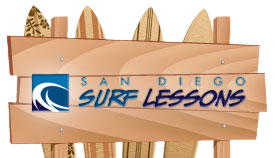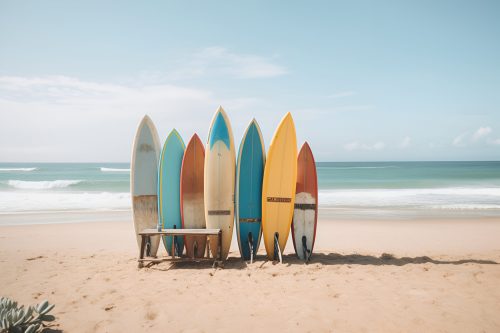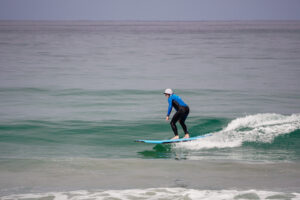Understanding the Basics of Surfboard Design
Navigating the world of surfboards can be daunting, especially when trying to align a board with your unique style and ability. At the core of surfboard design are a few key elements: shape, size, and construction, each playing a significant role in the board’s performance. Whether you’re a seasoned surfer or a student at Pacific Surf School, understanding these basics can greatly influence your experience on the water. The shape of the board determines how it maneuvers on waves, while the size – which includes length, width, and thickness – affects stability and paddling ease. Construction materials impact durability and responsiveness. By grasping these design fundamentals, any surfer can make an informed decision when selecting a board, leading to better compatibility with their surfing technique and goals.
Matching Board Types to Your Surfing Style
Every surfer’s wave-riding is as individual as their fingerprint – and the surfboard should complement this individuality. Whether you prefer charging big waves, executing aggressive turns, or just enjoying a leisurely ride along the shoreline, there’s a type of board for every style. From the nimble shortboard, favored for its quick turns and aerial capabilities, to the longboard, synonymous with graceful glides and nose riding, the spectrum of boards available is wide. Meanwhile, the funboard, with its balance of maneuverability and stability, is a versatile choice suitable for intermediate surfers or those transition from longboarding. Additionally, the fish, with its wider and shorter design, offers the perfect blend for small waves and surfers looking to inject more fun into their sessions. This understanding of board types ensures that, whether you’re learning at Pacific Surf School or refining skills, you’re paired with a board that aligns with your surfing style.
Considering Skill Level in Board Choice
Your proficiency in the surf directly influences the type of board you should choose. For beginners, a larger and more buoyant board grants the stability needed to build confidence and skill. These boards are more forgiving, making it easier to catch waves and stand up. Intermediate surfers might opt for shorter boards that allow more maneuverability but still provide enough volume to paddle effectively. Advanced surfers typically gravitate towards high-performance shortboards or specialized shapes that suit specific wave conditions or their competitive aspirations. Regardless of skill level, the goal is to select a board that challenges you appropriately without hindering your progress. Schools like Pacific Surf School often provide guidance and a range of boards to help students make the leap from novice to advanced surfer smoothly.
The Role of Length, Width, and Thickness
The dimensions of a surfboard play a critical role in how it performs in the water. Length is a prime factor in paddling speed and wave-catching ability; longer boards glide better but can be more difficult to turn. Width influences stability – a wider board helps with balance, which can be particularly beneficial for beginners. Thickness provides buoyancy, allowing the board to float higher in the water and making it easier to paddle. However, too much thickness can make a board unwieldy. Balancing these three dimensions is important when choosing a surfboard, particularly at a learning institution like Pacific Surf School, where instructors might emphasize different aspects of these dimensions to help students at various stages of their surfing journey.
Tail Shapes and Their Impact on Performance
The tail of a surfboard can significantly affect the board’s riding characteristics – think of it as the rudder that steers the ship. Common tail shapes include the rounded pin, ideal for smooth turns and holding lines in larger waves, and the squashtail, which offers increased lift and is better suited for sharp turns and maneuverability, often useful in small to medium wave conditions. The swallowtail helps maintain speed and provides stability in small waves, while the fishtail, often found on fish surfboards, allows for a loose ride, ideal for snappy turns. The choice of tail shape is typically based on the types of waves you will be riding and your preferred style of surfing.
Fins Configuration – Single, Twin, Tri, or Quad?
Fins influence the directional movement and stability of a surfboard, and their configuration can change how a board handles in the water. Single-fin boards are great for a classic, smooth ride and are often seen on longboards. Twin-fins, or fish boards, allow for a looser feel, making them fun in small to moderate surf. Tri-fin setups, or thrusters, are perhaps the most versatile, offering a balance of stability, control, and maneuverability, while quad-fins offer speed in small waves and a unique hold in larger surf. Surfboard fins come in different sizes and materials, and some boards even allow you to change the fin setup to suit the conditions or your preference, an option that may be explored by surfers at various levels, including those enrolled with Pacific Surf School.
Construction Materials: Pros and Cons
When selecting a surfboard, the materials from which it’s constructed will impact its performance and longevity. Traditional fiberglass surfboards are known for their durability and performance quality, while epoxy boards are lighter and offer more buoyancy, which can be advantageous for beginners trying to catch waves. However, epoxy can also feel stiffer and may not provide the same level of feedback as fiberglass. Soft-top surfboards are often recommended for beginners, like those at Pacific Surf School, because they are safe and incredibly buoyant, making it easier to stand up and ride waves.
Custom vs. Off-the-Rack Surfboards
While off-the-rack surfboards provide the convenience of immediate purchase, custom surfboards offer the ability to tailor every aspect to suit your needs. A custom board can be designed to your exact specifications, taking into account your weight, height, skill level, and usual surf conditions. It allows for a more personal connection with your board and, ideally, an improved performance in the water. Pacific Surf School instructors might advise more experienced surfers looking to refine their skill set to consider going custom.
Board Maintenance and Longevity
Taking care of your surfboard is key to its longevity and your safety in the water. Regular maintenance, such as fixing dings promptly, rinsing off saltwater, and storing it properly, will protect your investment and ensure that your board performs well for years to come. It’s a good habit to get into, regardless of your experience level, and one that Pacific Surf School likely emphasizes to its students.
Learning from the Pros: What Boards Do They Ride?
Looking to professionals can provide insight into board selection. Pros often ride a variety of shapes and sizes, each fine-tuned for specific conditions or competition requirements. Although a beginner or an intermediate surfer might not need the same high-performance gear, observing the choices of experienced surfers can offer inspiration and aspirational goals.
The Final Wave: Choosing a Board That Grows with You
Ultimately, the quest for the ideal surfboard is about finding one that not only suits your current skills and style but can also accommodate your growth as a surfer. It’s worth considering whether a board will help you progress to the next level and whether it has the versatility to handle a variety of conditions. The guidance and expertise provided by schools such as Pacific Surf School can be instrumental in making a choice that fits both present abilities and future ambitions.





